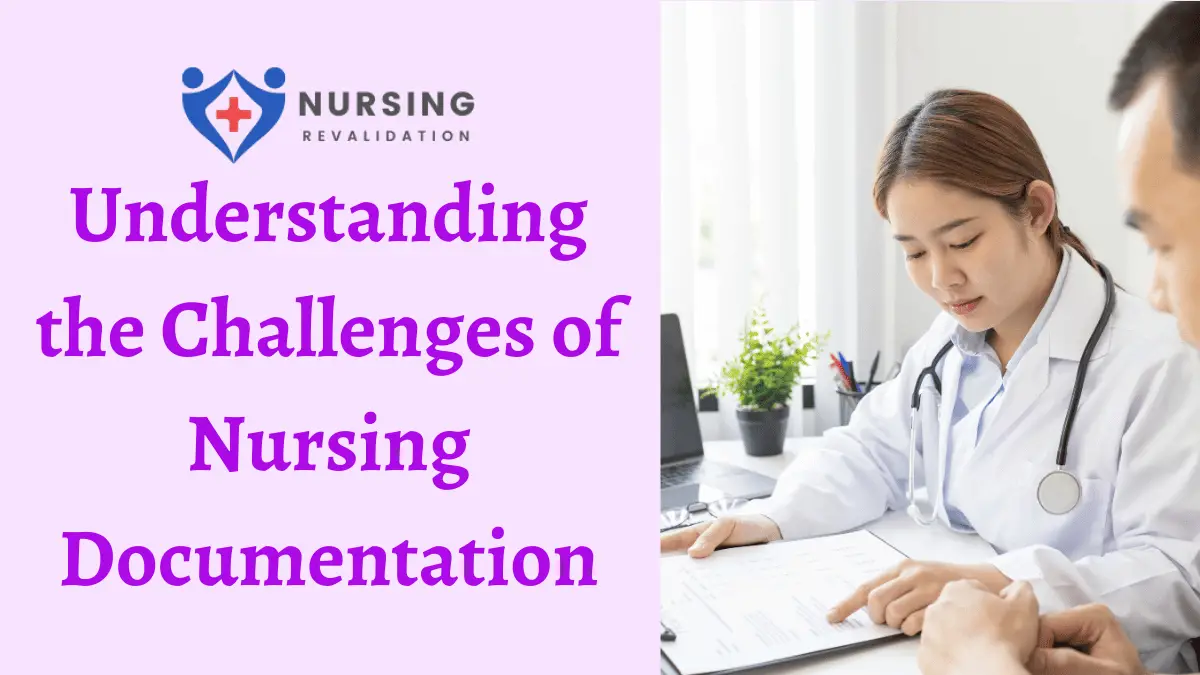In the intricate tapestry of healthcare, nursing documentation stands as a critical thread. It serves as the backbone of patient care, providing a detailed account of assessments, interventions, and outcomes. However, amidst its undeniable importance, nursing documentation poses a myriad of challenges that can impede efficiency, accuracy, and ultimately, patient care. In this comprehensive guide, we delve deep into the nuances of nursing documentation, uncovering the hurdles faced by healthcare professionals and exploring strategies to overcome them.
The Importance of Nursing Documentation
Nursing documentation serves multifaceted purposes within healthcare settings. It not only facilitates communication among healthcare team members but also ensures continuity of care, legal and regulatory compliance, quality improvement initiatives, and reimbursement processes. Each entry in a patient’s medical record holds valuable information that informs decision-making, monitors patient progress, and safeguards against errors.
Table: Strategies for Overcoming Documentation Challenges
| Challenge | Strategy |
|---|---|
| Time Constraints and Workload Pressures | Streamlining Documentation Processes |
| Complexity and Length of Documentation | Investing in Training and Education |
| Technological Issues and EHRs | Utilizing Assistive Technologies |
| Documentation Fatigue and Burnout | Promoting Interdisciplinary Collaboration |
| Risk of Errors and Legal Ramifications | Prioritizing Work-Life Balance |
Common Challenges in Nursing Documentation
- Time Constraints and Workload Pressures
- Nursing documentation often competes with direct patient care responsibilities, leading to time constraints and workload pressures.
- Nurses may struggle to allocate sufficient time for thorough documentation amidst the demands of administering medications, performing assessments, and attending to patient needs.
- Complexity and Length of Documentation
- Nursing documentation requires meticulous attention to detail and adherence to specific formatting guidelines.
- The complexity and length of documentation templates can overwhelm nurses, leading to errors, omissions, or incomplete entries.
- Technological Issues and Electronic Health Records (EHRs)
- The transition from paper-based to electronic health records (EHRs) has introduced new challenges in nursing documentation.
- Technical glitches, user interface issues, and inadequate training on EHR systems can hinder efficient documentation practices.
- Documentation Fatigue and Burnout
- Cumbersome documentation processes contribute to documentation fatigue and burnout among nurses.
- Excessive administrative burden detracts from the time and energy nurses can devote to direct patient care, compromising both job satisfaction and patient outcomes.
- Risk of Errors and Legal Ramifications
- Inaccurate or incomplete documentation poses significant risks, including compromised patient safety and legal ramifications.
- Documentation errors can lead to misunderstandings, misinterpretations, and adverse events, underscoring the importance of precision and clarity in nursing documentation.
Strategies for Overcoming Challenges
- Streamlining Documentation Processes
- Implementing standardized documentation templates and protocols can streamline documentation processes and reduce cognitive load on nurses.
- Prioritize essential information and minimize redundant or non-essential documentation requirements to optimize efficiency.
- Investing in Training and Education
- Providing comprehensive training on EHR systems and documentation best practices is essential for empowering nurses to navigate complex documentation processes effectively.
- Continuous education and professional development opportunities ensure that nurses remain proficient in documentation standards and technological advancements.
- Utilizing Assistive Technologies
- Leveraging assistive technologies such as voice recognition software, mobile documentation tools, and predictive text algorithms can enhance documentation accuracy and efficiency.
- These technologies automate repetitive tasks, facilitate real-time documentation at the point of care, and mitigate the burden of manual data entry.
- Promoting Interdisciplinary Collaboration
- Foster interdisciplinary collaboration and communication to streamline documentation processes and ensure holistic patient care.
- Encourage open dialogue among healthcare team members to address documentation challenges, share best practices, and implement quality improvement initiatives collaboratively.
- Prioritizing Work-Life Balance
- Recognize the importance of work-life balance in mitigating documentation fatigue and burnout among nurses.
- Implement policies and practices that support nurse well-being, such as flexible scheduling, workload management strategies, and access to mental health resources.
Conclusion
In conclusion, navigating the challenges of nursing documentation requires a multifaceted approach that addresses systemic barriers, technological complexities, and individual well-being. By streamlining documentation processes, investing in training and technology, promoting interdisciplinary collaboration, and prioritizing work-life balance, healthcare organizations can empower nurses to fulfill their documentation responsibilities effectively while delivering high-quality, patient-centered care. Understanding and addressing these challenges are essential steps towards optimizing nursing documentation practices and advancing healthcare delivery in the digital age.

